Pre-Interview: Artist Weekend 2018 - NGORONGORO II
Pre-Interview: Artist Weekend 2018 - NGORONGORO II
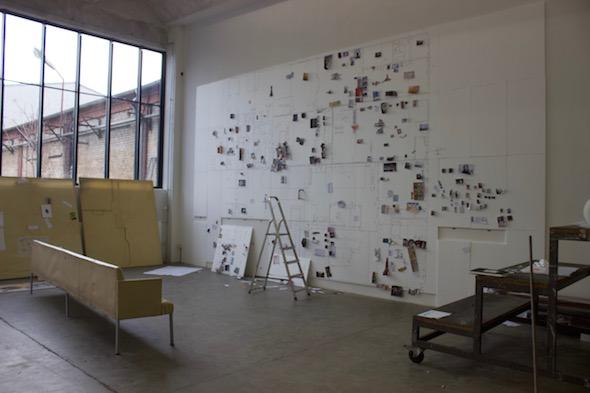
Initiated in 2015, the large-scale group exhibition organized by artists Jonas Burgert, John Isaacs, Christian Achenbach, Zhivago Duncan, Andrej Golder, Andreas Mühe and David Nicholson under the name of Artist Weekend, is taking place for the second time over this year’s Gallery Weekend. NGORONGORO II opened yesterday and will be on through Sunday, 29 April. Ahead of the opening, we had the opportunity to visit the studio complex where the exhibition is held and meet with one of the initiators, John Isaacs, as the installation was getting underway.
Arriving at the space, through the entrance gate into a yard, the atmosphere was abuzz with preparations. Deliveries of crated artwork were arriving; electricity was being installed. Paintings were nearing completion in still-functional studios, even as the various rooms were undergoing the process of transformation into an exhibition space. As a materialization of this, walls were being erected with the dual purpose of creating storage space – for the works in the studio – and displaying works for the exhibition. Meanwhile, lunch was served in a communal kitchen.
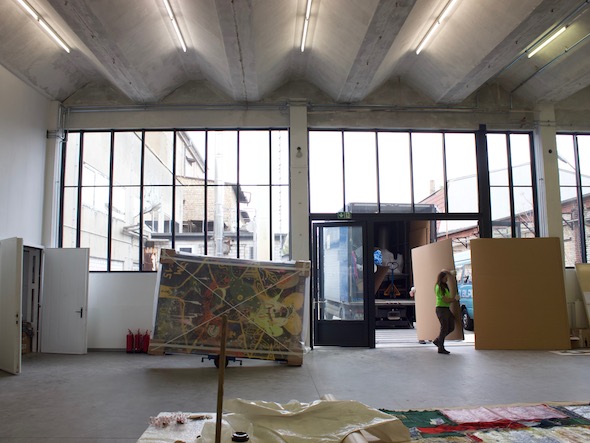
Photo by Nicola Papaioannou / Bpigs.
In a large space that had been mostly cleared out, a massive floor plan delineating the various rooms consumed one wall. Within the spaces drawn onto boards, small images of the artworks were pinned, mapping out the tentative exhibition layout, or as Isaacs described, the ‘battle plan.’ The positions of the works were not yet fixed, remaining flexible for the layout changes that would surely occur in the days leading up to the exhibition’s opening.
Though the studios have undergone renovations, some of the other rooms and buildings in the complex have remained largely untouched. These old buildings, damaged by fire, with ceiling boards exposed, walls covered in graffiti, and dust and debris coating the floors, provide an eclectic backdrop and the possibility of producing intriguing contrasts with the works placed in them. The spaces themselves, large and small, dark and bright, high ceilinged and claustrophobic, and the variety of textures make for an assemblage as multilayered as the collection of works that fill it during the exhibition.

Photo by Nicola Papaioannou / Bpigs.
John Isaacs walked us through this labyrinth of rooms, giving further insight into the impetus and process of organizing such a project, and what we should look forward to experiencing in this unique setting.
How did the idea to collaboratively organize this large-scale exhibition come about?
The building, which Jonas Burgert bought about 10 years ago, was an East German generator factory. The idea effectively came out of the fact that we have this huge space – now used as studios – which could also be used as an exhibition space. There's nothing new in that; plenty of artists have organized exhibitions in studios. We just thought we could do a massive show: invite people we know, invite people we like, and then take it further by inviting people that we might not know, but perhaps have some connection to. You will get the general idea that none of us knows what we're doing. We're just doing it. For us, I think to do it for a reason, or with an agenda, wouldn't actually be the reason to do it. That's the institutional way. The idea was that we could make an exhibition here in a way that isn't institutional – because we're artists. So, we don't handle the work in such a precious way. We can combine it without having a curatorial premise. When we did the show in 2015, there were 140 artists, and it was only open for four days. It's a lot of work, and no one really does it like that. It was an art exhibition, but also an event. I think for people it’s also very voyeuristic to come into this area that is closed. There's a swimming pool here, which was full of families and kids last time. In a way, it's a paradise in the city. And I think this open door situation makes it more than an art exhibition. It really feels like a cultural moment. We called the group Artist Weekend, which is a jokey reference to Gallery Weekend, but it actually works outside of that context, as well.
What is the process like, in terms of inviting artists and choosing work?
The exhibition is put together by all seven of us. Before we invite someone, we make suggestions and then we all meet and see whether it’s a good fit. It's democratic thing; not everyone agrees, but enough of us do. Then we ask the artists to send in the work they have that’s available and we choose by that. Some artists send in what they want to show. There are a few galleries collaborating with us, as well. In some cases, as with artists like Bill Viola, it's a matter of what's possible to borrow, since there wasn't a direct connection to him. So, we have a work of his coming on loan from one of the galleries that we work with. Of course, we don't manage to get everything we want – for instance, the work of Paul McCarthy that we initially tried to bring in. We still wanted to have him in the show, though, so we borrowed a piece from a private collector. Mostly, the process involves selecting the artists and the kind of work we like and then finding the pieces that we can take for the show. There are no rules. It's good to just be able to bring in what we can grab hold of. It's also often through social connections. And we tried really hard, because it's seven guys, to make sure it wasn't just a boys’ thing. I think one-third of the artists are women. It could be more.
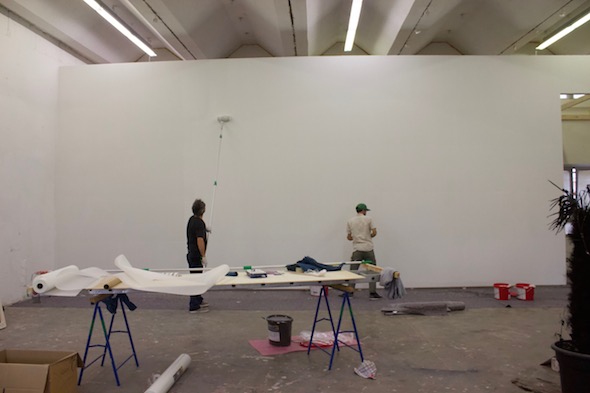
Photo by Nicola Papaioannou / Bpigs.
It’s a huge exhibition over a very short period of time, and, as you’ve mentioned, without the structure of an institution. How do you manage it logistically?
It’s been months and months of organizing and meetings. This year, there are 162 artists – more than last time – and again it’s for only four days. One reason it's four days is because one of the biggest costs in doing a show like this is that every room needs two security people to keep an eye on the work. We have art students from the Weißensee School and UdK that will be doing that. Logistically, four days doesn't seem very long to do a show like this, but last time we had something around 16,000 visitors in four days. So, in that period of time, it's an intense thing and then it's gone – it all goes back to being studios with people working.
In 2015, we sold an edition to finance the show, and we made a little bit of money from the bar. But the artists show their work and if there's a collector interested in buying something, that's between them and the collector. We're not commercial. And we don't charge admission, which I think is also important for the overall feeling of the show. The whole thing is paid for by our own art – it’s completely self-financed. This time around, we've done another edition, which is a box set of seven works for 2000 euros. With the money from that, as well as the sale of the original artworks that the edition is based on – for which we held an auction – we've raised nearly 200,000 euros to finance the show, so far. We didn't really want sponsorship; we didn't want to have a company logo on it. But this time we have to deal with issues that we didn't even consider last time. When we did the show in 2015, there was no insurance or public liability safety. This time around the whole process is a bit more bureaucratic.
Can you explain the meaning behind the title?
The idea was that the show would not have a curatorial premise; so, without that theme, we were thinking about what we could call the exhibition. NGORONGORO is a caldera – a volcanic crater – in Tanzania. It's like a nature park. I was there about 20 years ago, and I remember driving up a mountain and then suddenly there is no mountain and you're looking down into this huge collapsed crater full of grass, with a little river running through it. You can see all of these animals: rhinos, giraffes. I’m not sure whether they’re trapped in there, but the sides are very steep. You wouldn't be surprised to see dinosaurs flying around in there. So, we thought, this building, which is an enclosed area with a yard and doors, it’s like the crater. With all of these different artistic perspectives, it gave us the justification to be able to put it all together without a curatorial premise. I think people also really enjoyed the mixture of levels, which go right through the spectrum. There are some very prominent artists in the show and there are some unknown artists. A painting by a student is placed next to the work of Gilbert & George, for instance.
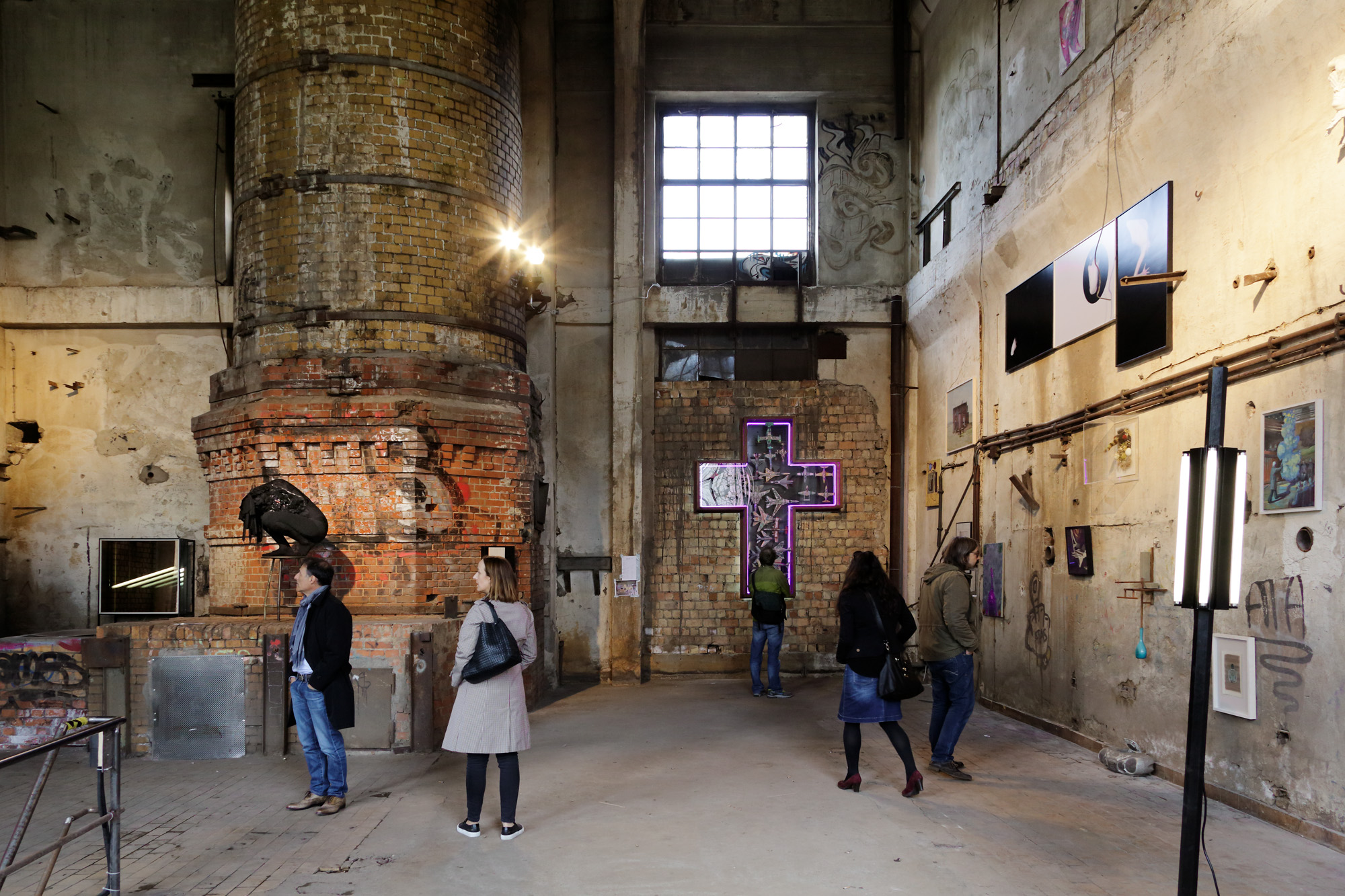
NGORONGORO, 2015 / Photo Courtesy of Artist Weekend.
The first iteration of NGORONGORO took place three years ago. Is this an intended format you plan to continue?
I don't think so. Last time we did it, we said we’d never do it again. But a few years later we started to think about whether we should. I’m not really into this movie sequel scenario, which already happens in calling it NGORONGORO II. But these things, like documenta, do start that way. When we did it the first time, there were some invitations to do this kind of exhibition in another venue, or there were other scenarios that could occur. But I think it is most likely that this big space here, which isn't really used as a studio just yet, is possible to keep flexible. I think that could be like a NGORONGORO project space. We could do more solo shows and more concentrated perspectives. Or, other people could come in and curate something.
It's weird because, when we did it the first time, there were all of these quick decisions. It’s different this time around, because we already have this sort of logo and people know about it. We want to play with the expectations of people who saw it last time. I don't know how different it will be, though. We even had this idea: why don't we just do exactly the same exhibition, with all of the same works in the same places? But there have been some renovations since then, and we’re using these two old, derelict houses on either side of the entrance gate, which we didn’t use last time. I'm not quite sure why we use them this time either, because it's a lot of work to prepare. But I think it's good to have this otherworldly feel.

Photo by Nicola Papaioannou / Bpigs.
Are artists creating work here in the space specifically for the show?
There's a video performance artist who's doing an installation performance that is then being shown again through the exhibition. There's Jeewi Lee, who's doing a piece on the architecture in the building. But in terms of site-specific, there isn't a lot. It's mostly work from studios. As is the case with Julian Rosefeldt, we have a few premieres of new films, and a lot of new work. And there are older pieces, as well. There's actually a 3000-year-old artifact from Cambodia – we have a connection to a museum here in Berlin, which suggested this piece. A lot of the work is in a more classical form of art – we don't have radical installation perspectives – but it's about the way we can shuffle it all together in this space.
Are there events scheduled within the exhibition period? The exhibition, with its short duration, is, as you pointed out, more of an event in itself.
We have a program of bands playing. There will be a talk, ‘WOZU KUNST HEUTE NOCH?’ The Chapman Brothers are doing a performance, which is something they had done in England, where people can turn up with their money and they'll do a drawing on it. But there isn’t much planned in that regard. Basically, it's this strange exhibition with a strange name, coming from somewhere that is not the normal place, and feeling a little bit funky, but still with the possibility of being very poetic.
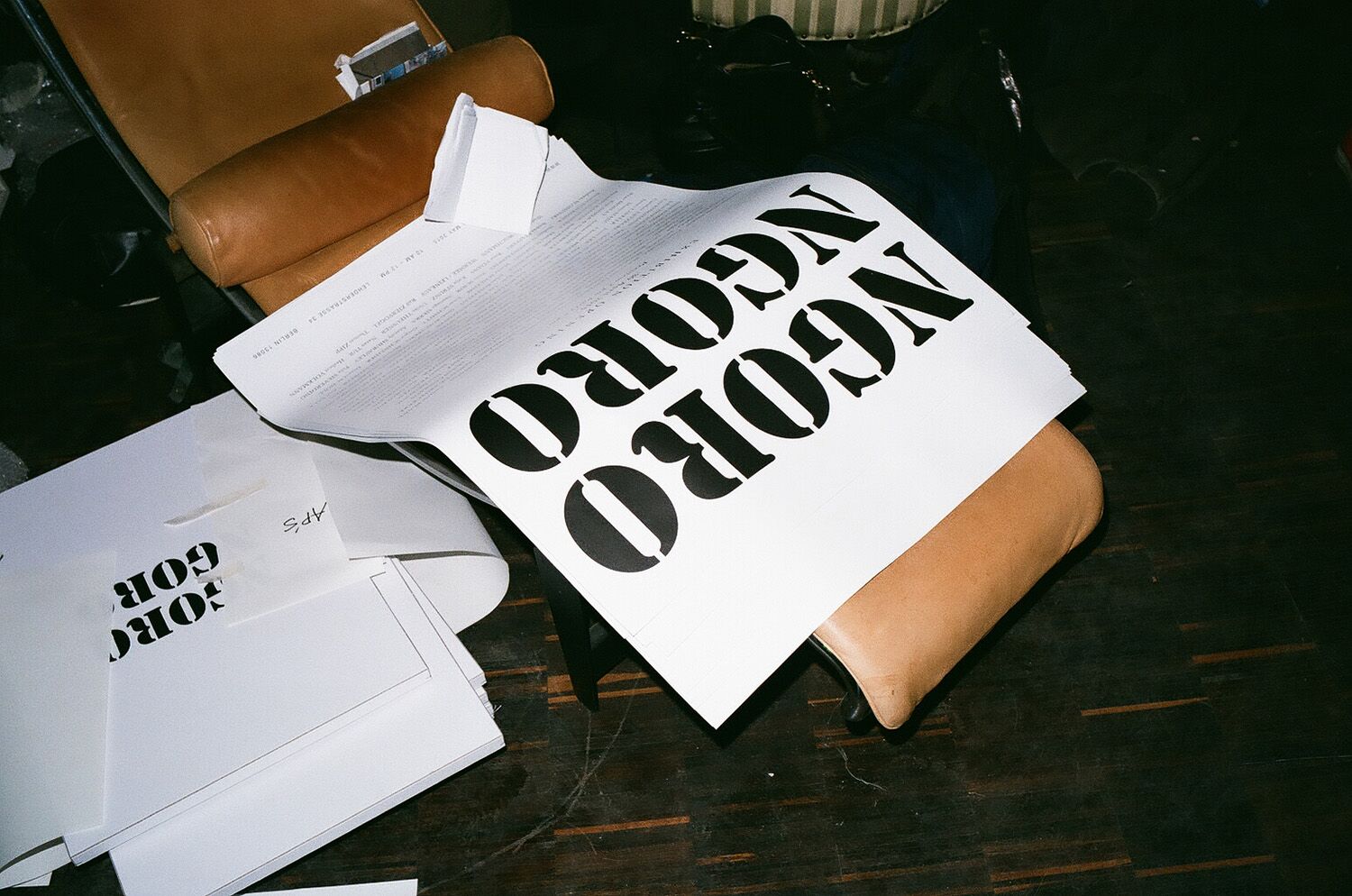
Photo Courtesy of Artist Weekend.
***
NGORONGORO II Lehderstrasse 34, 13086 Berlin 26 April - 29 April, 2018 / 10am - midnight more info